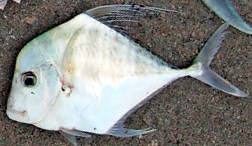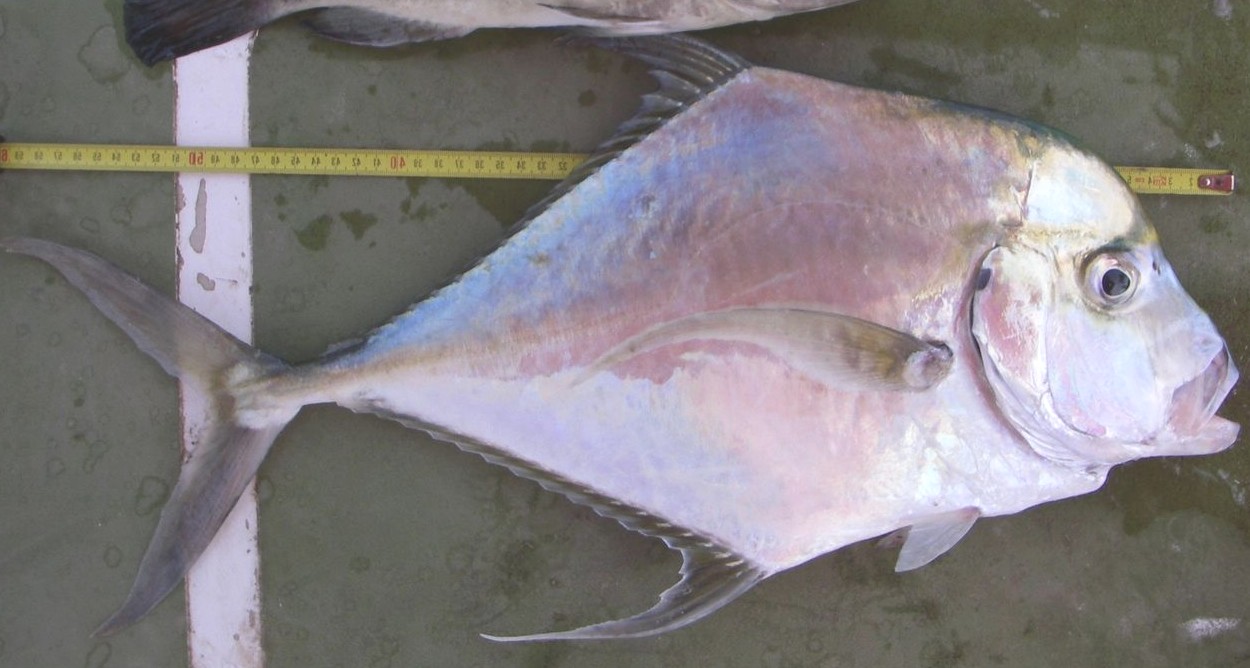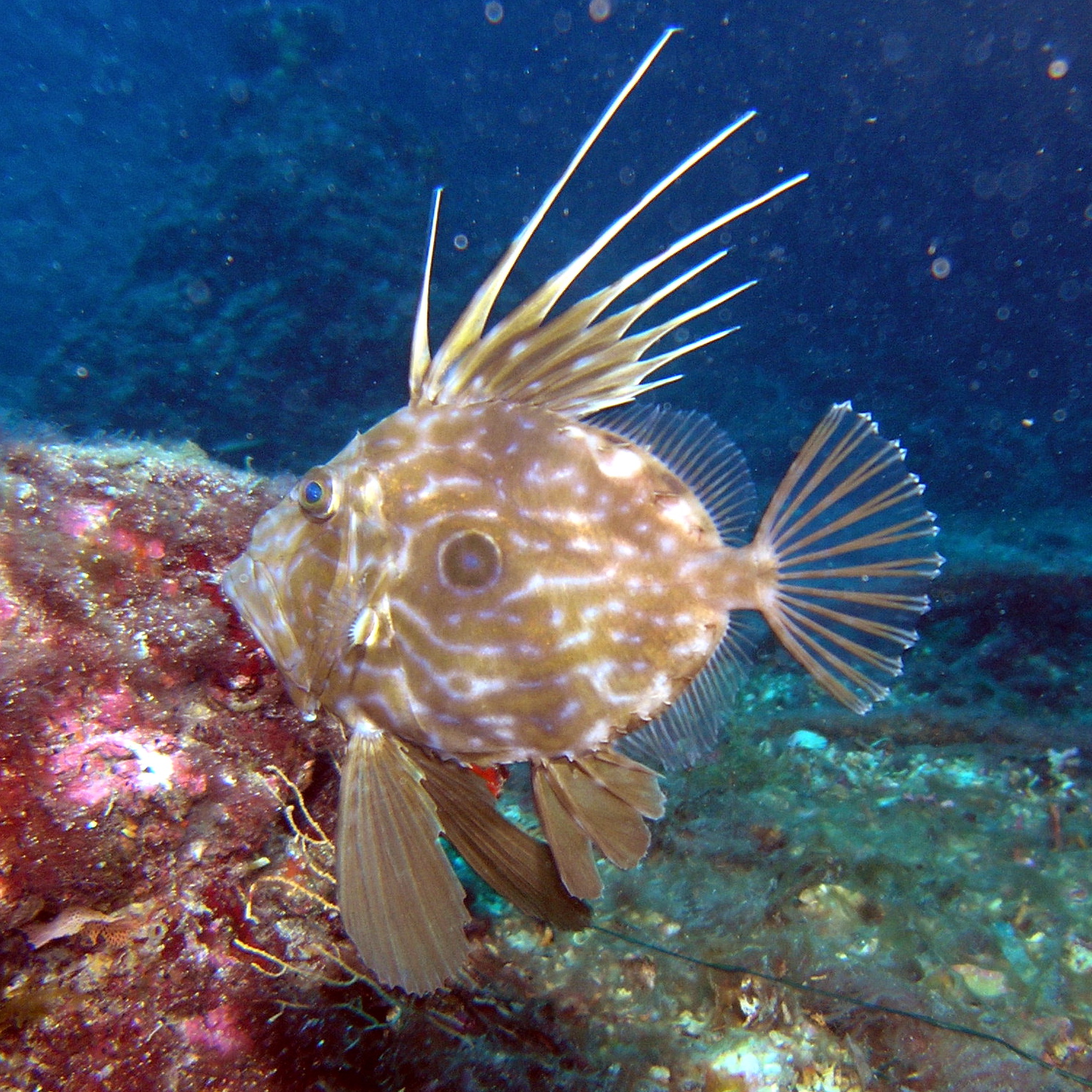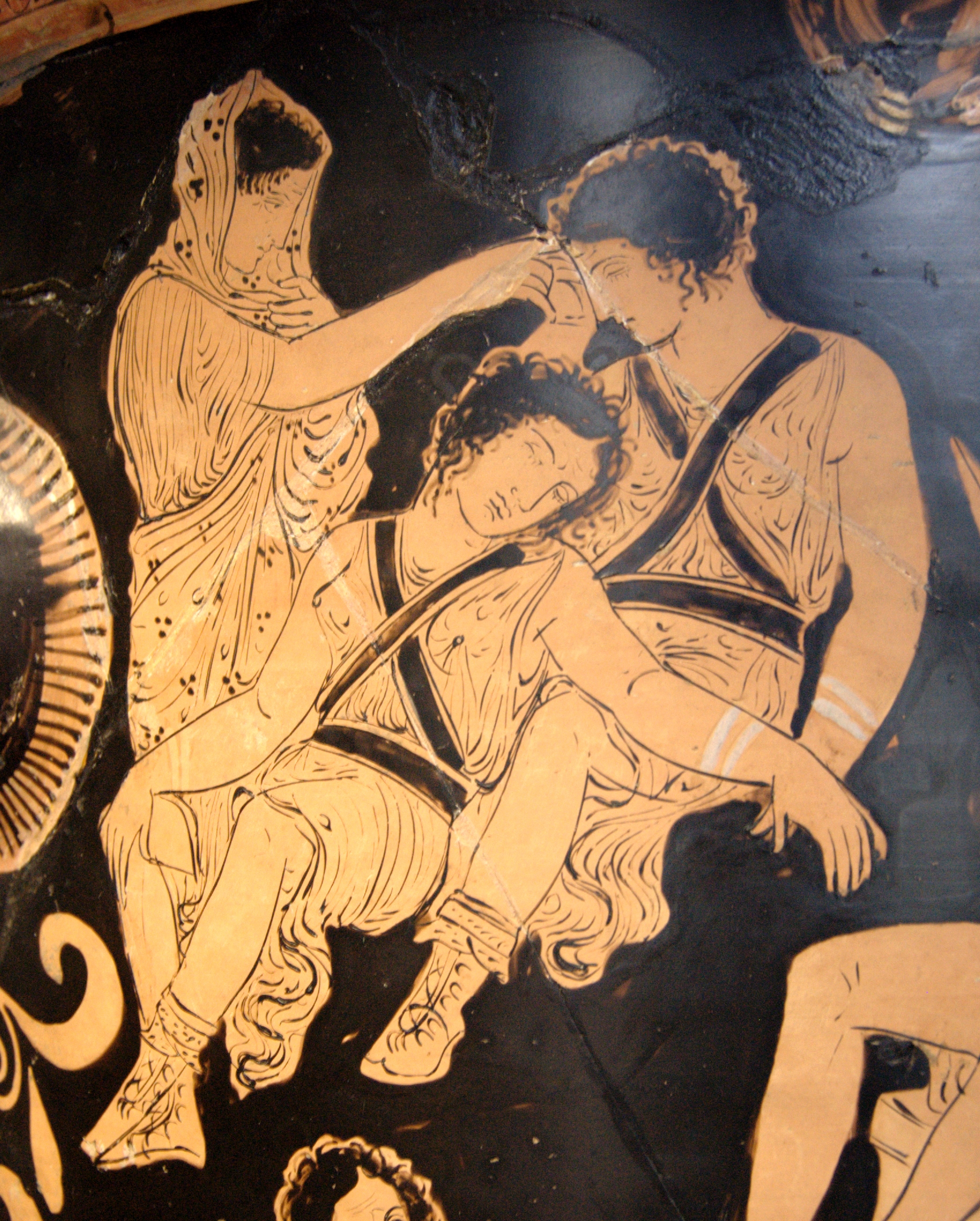|
Alectis
''Alectis'' is a genus of fish in the family Carangidae containing three extant species, all of which are large marine fishes. They are commonly known as threadfish, diamond trevallies or pompanos, although they have no close affiliation with the true pompano genus. Taxonomy ''Alectis'' is one of 33 genera in the jack and horse mackerel family Carangidae. The Carangidae are ray-finned fishes in the order Carangiformes. The first fish in the genus to be described was ''Alectis ciliaris'' under the genus name of ''Zeus'', part of the dory family. Lacépède recognized the species was not a dory and assigned it to a new genus, '' Gallus'', however this was preoccupied by a bird. In 1815, Rafinesque proposed the name ''Alectis'' in an obscure publication. Georges Cuvier used another generic name, ''Scyris'', for the genus in 1829, but the name ''Alectis'' was rediscovered by James Douglas Ogilby in 1913 and had priority. The name ''Alectis'' is derived from one of three Eriny ... [...More Info...] [...Related Items...] OR: [Wikipedia] [Google] [Baidu] |
Alectis Ciliaris
The African pompano (''Alectis ciliaris''), also known as the pennant-fish or threadfin trevally, is a widely distributed species of List of marine aquarium fish species, tropical marine fish in the jack family, Carangidae. The species is found in tropical waters worldwide, with adults often inhabiting coastlines, while juveniles are usually pelagic, floating with ocean currents. The adult African pompano is similar in appearance to the other members of the genus ''Alectis'', with the concave shape of the head near the eyes; the clearest distinguishing feature. The juveniles are similar to other members of ''Alectis'', having long, filamentous dorsal fin, dorsal and anal fin tips which are thought to discourage predators. The species lives in depths less than 100 m, consuming a range of crustaceans and small fishes. The species is of minor fishery, economic importance, often taken amongst other tropical midwater fishes by hook and line, while juveniles are occasionally caught in b ... [...More Info...] [...Related Items...] OR: [Wikipedia] [Google] [Baidu] |
Alectis Simus
''Alectis'' is a genus of fish in the family Carangidae containing three extant species, all of which are large marine fishes. They are commonly known as threadfish, diamond trevallies or pompanos, although they have no close affiliation with the true pompano genus. Taxonomy ''Alectis'' is one of 33 genera in the jack and horse mackerel family Carangidae. The Carangidae are ray-finned fishes in the order Carangiformes. The first fish in the genus to be described was ''Alectis ciliaris'' under the genus name of ''Zeus'', part of the dory family. Lacépède recognized the species was not a dory and assigned it to a new genus, '' Gallus'', however this was preoccupied by a bird. In 1815, Rafinesque proposed the name ''Alectis'' in an obscure publication. Georges Cuvier used another generic name, ''Scyris'', for the genus in 1829, but the name ''Alectis'' was rediscovered by James Douglas Ogilby in 1913 and had priority. The name ''Alectis'' is derived from one of three Erinyes in ... [...More Info...] [...Related Items...] OR: [Wikipedia] [Google] [Baidu] |
Alectis Alexandrina
The African threadfish (''Alectis alexandrina''), also known as the Alexandria pompano, is a species of large marine fish in the jack family, Carangidae. The species is distributed along the coast of tropical Africa in the eastern Atlantic Ocean, extending to the Mediterranean Sea. Adults live predominantly in waters shallower than 70 m deep, often forming small schools. The African threadfish is similar in appearance to the closely related and co-occurring African pompano, with the species' most definitive feature its slightly concave head profile. Like other members of the genus ''Alectis'', the juveniles of the species have long trailing dorsal and anal fins. The African threadfish is of minor commercial importance, and is also considered to be a game fish. Taxonomy and naming The African threadfish is one of three members of the diamond trevally genus ''Alectis'', which is one of 33 genera in the jack and horse mackerel family Carangidae. The Carangidae are part of the order ... [...More Info...] [...Related Items...] OR: [Wikipedia] [Google] [Baidu] |
Carangidae
The Carangidae are a family of ray-finned fish which includes the jacks, pompanos, jack mackerels, runners, and scads. It is the largest of the six families included within the order Carangiformes. Some authorities classify it as the only family within that order but molecular and anatomical studies indicate that there is a close relationship between this family and the five former Perciform families which make up the Carangiformes. They are marine fishes found in the Atlantic, Indian and Pacific Oceans. Most species are fast-swimming predatory fishes that hunt in the waters above reefs and in the open sea; some dig in the sea floor for invertebrates. The largest fish in the family, the greater amberjack, ''Seriola dumerili'', grows up to 2 m in length; most fish in the family reach a maximum length of 25–100 cm. The family contains many important commercial and game fish, notably the Pacific jack mackerel, ''Trachurus symmetricus'', and the other jack mackerels in ... [...More Info...] [...Related Items...] OR: [Wikipedia] [Google] [Baidu] |
Eocene
The Eocene ( ) Epoch is a geological epoch (geology), epoch that lasted from about 56 to 33.9 million years ago (mya). It is the second epoch of the Paleogene Period (geology), Period in the modern Cenozoic Era (geology), Era. The name ''Eocene'' comes from the Ancient Greek (''ēṓs'', "dawn") and (''kainós'', "new") and refers to the "dawn" of modern ('new') fauna that appeared during the epoch. The Eocene spans the time from the end of the Paleocene Epoch to the beginning of the Oligocene Epoch. The start of the Eocene is marked by a brief period in which the concentration of the carbon isotope Carbon-13, 13C in the atmosphere was exceptionally low in comparison with the more common isotope Carbon-12, 12C. The end is set at a major extinction event called the ''Grande Coupure'' (the "Great Break" in continuity) or the Eocene–Oligocene extinction event, which may be related to the impact of one or more large bolides in Popigai impact structure, Siberia and in what is now ... [...More Info...] [...Related Items...] OR: [Wikipedia] [Google] [Baidu] |
Dory (fish)
The common name ''dory'' (from the Middle English ''dorre'', from the Middle French ''doree'', lit. "gilded one") is shared (officially and colloquially) by members of several different families of large-eyed, silvery, deep-bodied, laterally compressed, and roughly discoid marine fish. As well as resembling each other, dories are also similar in habit: most are deep-sea and demersal. Additionally, many species support commercial fisheries as food fish. Most dory families belong to the order Zeiformes, suborder Zeioidei: *The "true dories", family Zeidae (five species, including the well-known John Dory) *The zeniontids, family Zenionidae or Zeniontidae (seven species) *The "Australian dories", family Cyttidae (three species all within the genus '' Cyttus'') *The oreos, family Oreosomatidae (ten species) *The parazen family, Parazenidae (four species, including the rosy dory) Additionally, several species of spinyfin (family Diretmidae, order Beryciformes) have been given th ... [...More Info...] [...Related Items...] OR: [Wikipedia] [Google] [Baidu] |
Étienne Geoffroy Saint-Hilaire
Étienne Geoffroy Saint-Hilaire (15 April 177219 June 1844) was a French naturalist who established the principle of "unity of composition". He was a colleague of Jean-Baptiste Lamarck and expanded and defended Lamarck's evolutionary theories. Geoffroy's scientific views had a transcendental flavor (unlike Lamarck's materialistic views) and were similar to those of German morphologists like Lorenz Oken. He believed in the underlying unity of organismal design, and the possibility of the transmutation of species in time, amassing evidence for his claims through research in comparative anatomy, paleontology, and embryology. He is considered as a predecessor of the evo-devo evolutionary concept. Life and early career Geoffroy was born at Étampes (in present-day Essonne), and studied at the Collège de Navarre, in Paris, where he studied natural philosophy under M. J. Brisson. He then attended the lectures of Daubenton at the College de France and Fourcroy at the Jardin des Pl ... [...More Info...] [...Related Items...] OR: [Wikipedia] [Google] [Baidu] |
Fossil Record
A fossil (from Classical Latin , ) is any preserved remains, impression, or trace of any once-living thing from a past geological age. Examples include bones, shells, exoskeletons, stone imprints of animals or microbes, objects preserved in amber, hair, petrified wood and DNA remnants. The totality of fossils is known as the ''fossil record''. Paleontology is the study of fossils: their age, method of formation, and evolutionary significance. Specimens are usually considered to be fossils if they are over 10,000 years old. The oldest fossils are around 3.48 billion years old to 4.1 billion years old. Early edition, published online before print. The observation in the 19th century that certain fossils were associated with certain rock strata led to the recognition of a geological timescale and the relative ages of different fossils. The development of radiometric dating techniques in the early 20th century allowed scientists to quantitatively measure the absolu ... [...More Info...] [...Related Items...] OR: [Wikipedia] [Google] [Baidu] |
Greek Mythology
A major branch of classical mythology, Greek mythology is the body of myths originally told by the Ancient Greece, ancient Greeks, and a genre of Ancient Greek folklore. These stories concern the Cosmogony, origin and Cosmology#Metaphysical cosmology, nature of the world, the lives and activities of List of Greek mythological figures, deities, Greek hero cult, heroes, and List of Greek mythological creatures, mythological creatures, and the origins and significance of the ancient Greeks' own cult (religious practice), cult and ritual practices. Modern scholars study the myths to shed light on the religious and political institutions of ancient Greece, and to better understand the nature of myth-making itself. The Greek myths were initially propagated in an oral tradition, oral-poetic tradition most likely by Minoan civilization, Minoan and Mycenaean Greece, Mycenaean singers starting in the 18th century BC; eventually the myths of the heroes of the Trojan War and its after ... [...More Info...] [...Related Items...] OR: [Wikipedia] [Google] [Baidu] |
Erinyes
The Erinyes ( ; sing. Erinys ; grc, Ἐρινύες, pl. of ), also known as the Furies, and the Eumenides, were female chthonic deities of vengeance in ancient Greek religion and mythology. A formulaic oath in the ''Iliad'' invokes them as "the Erinyes, that under earth take vengeance on men, whosoever hath sworn a false oath". Walter Burkert suggests that they are "an embodiment of the act of self-cursing contained in the oath". They correspond to the Dirae in Roman mythology. The Roman writer Maurus Servius Honoratus wrote (ca. 400 AD) that they are called "Eumenides" in hell, "Furiae" on Earth, and "Dirae" in heaven. Erinyes are akin to some other Greek deities, called Poenai. According to Hesiod's ''Theogony'', when the Titan Cronus castrated his father, Uranus, and threw his genitalia into the sea, the Erinyes (along with the Giants and the Meliae) emerged from the drops of blood which fell on the Earth ( Gaia), while Aphrodite was born from the crests of sea ... [...More Info...] [...Related Items...] OR: [Wikipedia] [Google] [Baidu] |








